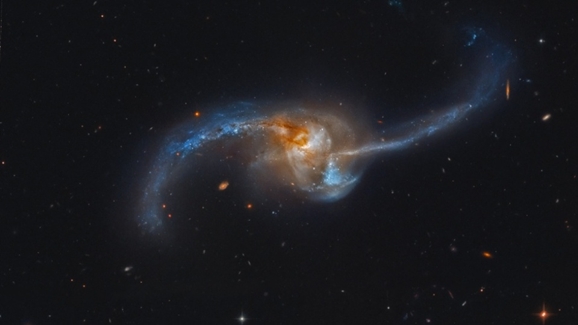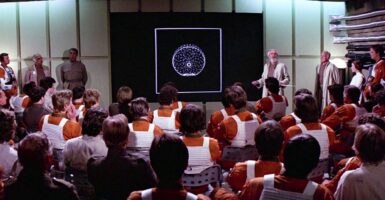Two Galaxies Collide, And There’s No Way Our Insurance Is Paying For This
This article is more than 2 years old
This may be a glimpse into our future. A few days ago, NASA showcased two galaxies that were, through time, in danger of merging into each other to become one single galaxy. With the passing of eons, the two galaxies have “made the beast with two backs” and now share a name, “NGC 2623.”

NASA’s Astronomy Picture of the Day depicted NGC 2623 sharing stars, planets, and mass, as captured by NASA’s Hubble Space Telescope. One half of it is roughly the same mass as our Milky Way galaxy. This is a look into the future because the Milky Way is due to collide with our neighboring Andromeda galaxy in about 3.75 billion years. Andromeda is also about 1.25 times the size of the Milky Way.
Rest assured, we’re going to be long gone before our Milky Way collides with Andromeda. Even if humans are still around that far in the future, scientists predict the Earth will be too hot to support organic life, as the Sun will increase in brightness and heat over the next 1.5 billion years. NASA explains the phenomenon:
The violent encounter between two galaxies that may have been similar to the Milky Way has produced widespread star formation near a luminous core and along eye-catching tidal tails. Filled with dust, gas, and young blue star clusters, the opposing tidal tails extend well over 50,000 light-years from the merged nucleus. Likely triggered by the merger, accretion by a supermassive black hole drives activity within the nuclear region. The star formation and its active galactic nucleus make NGC 2623 bright across the spectrum. This sharp cosmic snapshot of NGC 2623 (aka Arp 243) is based on Hubble Legacy Archive image data that also reveals even more distant background galaxies scattered through the field of view.
NGC 2623 is currently in the final stages of a titanic galaxy merger and is roughly 300 million light years from the Cancer star constellation. We should all be glad that we’re living on Earth at this moment so we don’t have to withstand the volcanic-goo of our future Earth to witness two galaxies becoming one.












